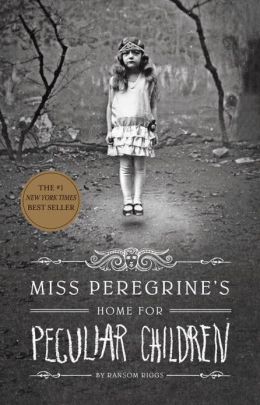Miss Peregrine’s Home for Peculiar Children
Ransom Riggs
Quirk Books, 2011
Young Adult, 352 Pages
![]()
![]()
Ransom Riggs’ use of antique photographs to illustrate this book grabbed my attention immediately. As a collector myself, I have tasted their magic. Browsing through images of “instant ancestors” can inspire the imagination to new heights, each picture allowing your mind to fill in the blanks and create a character with personality; hopes and dreams, quirks and fears all developed from a single snapshot in time.
Here, Riggs has waded through many photographic collections to compile a cadre of children with supernatural powers, each image becoming a unique character profile that fits into his tapestry of storytelling.
I am pleased to say that the book surpassed my expectations. Though it could easily have slipped into a collection of miniature storylines, the narrative did not feel pieced together in the least. Rather than shaping the story, the pictures were an element that helped me to envision the characters and bring the story closer to the heart. That said, there were a few scenes that did seem contrived specifically for the sake of a photos appearance, but they are easily forgivable in the broader picture of what will undoubtedly be a series of further novels.
16 year-old Jacob begins to hear things about his grandfather that he doesn’t like. There may have been “another woman.” His family had already disregarded the old man as a lunatic with his quirky stories about childhood friends who could lift boulders and float on air. Then his grandfather dies in Jacob’s arms, apparently murdered.
The last words of Jacob’s Grandfather were Riggs’ attempt at mystery, but they are too-quickly solved. Nevertheless, adventure and romance take over as Jacob and his father fly to a remote island where his Grandfather grew up. There, Jacob discovers a time passage back to World War II, a home filled with “peculiar” kids, and a very special girl named Emma.
Jacob’s rocky relationship with his father, who is sinking into depression, and his growing feelings for Emma make the characters real. Emma Bloom, a female firestarter (reminiscent of Hellboy’s Elizabeth Sherman,) is Jacob’s key to this other reality, though the two fall into intimacy a bit too easily given that she was once, and very recently for her, in love with Jacob’s Grandfather. The picture of Emma at the end of the book left me unsure of her age, looking a lot older and different than I had envisioned her, but one of the themes of this story is that love is timeless.
Emma introduces Jacob to a world where magical creatures called ymbrines create sanctuaries for peculiars, those with special powers. But what seems at first to be paradise quickly grows dark as things called wights and the fearsome hollowghasts that follow them, (once peculiars whose aspirations grew too large,) converge on the time loops in which the peculiars live.
Where it could be quite easy to drift into a cartoonish fantasy world with bug-eyed, big tongued monsters and kids with X-men like talents, Riggs beautifully and skillfully keeps it realistic (except for one point where a monster chases the children up a hill by walking on its tongue).
Throughout the book there is a weak but obvious parallel between the hollowghast monsters that are after the peculiars and the Nazis attacking Britain, both of which Jacob’s grandfather left Miss Peregrine’s and Emma to fight. At the end, the allegory becomes literal when we see that the hollowghasts have teamed with a German U-boat crew. The ending is a bit odd, but ties up the major loose ends. The main characters are given a deus-ex-machina ‘Map of Days’ that will lead them to other time loops in order to fight the insurrection of dark peculiars as the words “To be continued…” flow across the screen.
I am dying to know what happens next, but I still desire to go back to the house on Cairnholm Island, because I know somewhere in the ruins of the cellar is a broken box of photographs filled with images of quite peculiar children.
Related Posts:

